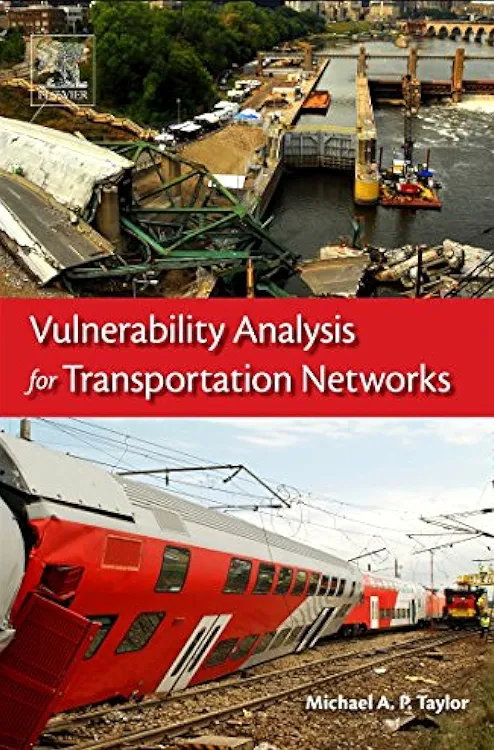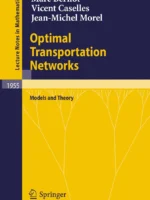Vulnerability Analysis for Transportation Networks Review
Vulnerability Analysis for Transportation Networks by Michael A. P. Taylor is a comprehensive survey of how and why transport systems fail and how to measure, model, and mitigate those failures. It unifies topological, flow, and accessibility perspectives so planners can compare weak points across modes and scales.
Overview
The book maps methods across three dimensions: time (hours to years), space (national to corridor), and mode (road, transit, rail). It covers graph metrics and critical-link tests, OD-based accessibility loss, capacity-degradation scenarios, and hazard-driven disruptions such as weather, crashes, maintenance, and cascading failures. Case studies show screening and deep-dive analyses for policy.
Summary
Taylor defines vulnerability as consequence under disruption, distinct from reliability and resilience. He then: 1) formalizes performance indicators (travel time, connectivity, accessibility); 2) contrasts topology-only screens with flow-aware and demand-aware metrics; 3) shows scenario design for link/node removal and partial capacity loss; 4) treats equity by mapping who loses access when links fail; 5) links results to mitigation: redundancy, protection, traffic management, and recovery planning.
Authors
Michael A. P. Taylor writes as a transport-systems scholar synthesizing decades of work in network reliability, accessibility, and risk-informed planning.
Key Themes
Vulnerability is about consequence, not just probability; topology is a first pass, flows and demand matter for impact; results depend on temporal and spatial framing; mitigation blends engineering, operations, and land-use choices.
Strengths and Weaknesses
Strengths: clear taxonomy of methods, cross-mode scope, and policy-oriented case studies that move from measurement to action. Weaknesses: limited hands-on software guidance and lighter coverage of cyber-physical threats; pair with recent DTA and resilience toolkits when implementing.
Target Audience
Transportation planners, resilience teams, emergency managers, and researchers who need a comparative framework for weak-link analysis across road, transit, and rail.
Favorite Ideas
Screen with topology, prioritize with flow and accessibility; measure loss to essential services, not only mean delay; treat recovery time as part of vulnerability, not an afterthought.
Takeaways
Define the performance you care about, pick disruption scenarios that reflect real hazards, and evaluate consequences at the OD and equity levels. Use the simplest method that answers the decision, and invest in redundancy or protection where consequence is high and alternatives are scarce.






